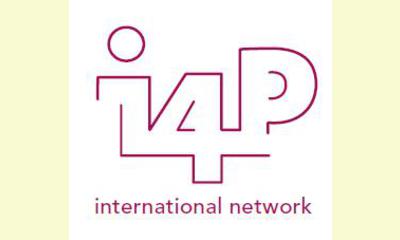|
|
International Civil Society Network on Infrastructures for Peace
an article by Paul van Tongeren
It is with great pleasure that we introduce you to
the International Civil Society Network on
Infrastructures for Peace (I4P). This is an
opportunty to share details of the new website: www.I4Pinte
rnational.org and inform you of some new
publications on I4P, which you may find
interesting.

click on photo to enlarge
The process of inviting Local Peace Committees
(LPCs), NGOs, practitioners and scholars to join the
network started in December 2012. By the end of
February 2013, the network counted some seventy
members. They are listed on the new website.
The aims of the network include:
- collecting and exchanging experiences and
best practices of local peacebuilders;
- ensuring I4P & LPCs become more widely
recognised, nationally and internationally;
- facilitating dialogue on the value of I4P
with multiple stakeholders, and
- enhancing the position of LPCs and NGOs
within I4P.
In combination with the new website, the following
publications have great potential to substantially
increase the interest in I4P and LPCs.
- special issue of the Journal of Peacebuilding and Development
- The Berghof-Handbook
Dialogue Series on Peace Infrastructures (#10)
- The new Peacebuilding Journal launched in February
with the article "Potential cornerstone of
infrastructures for peace? How local peace
committees can make a difference."
- the CRIES journal: Pensiament
o Proprio with an article on I4P
Many countries lack capacities and structures to
deal adequately with on-going and potential
violent conflict. This has emerged as a central
obstacle to the attainment of equitable and
sustainable development. In recent years, the
number of conflicts has been increasing once
again. Elections may become contested and violent
because underlying grievances often are not
addressed. We need strategies at the local,
national, regional and global levels on how to
deal with these phenomena.
Infrastructures for Peace and Local Peace
Committees can be important pillars to counter
these dangerous developments or substantially
reduce their impact. We need comprehensive,
inclusive and long-term approaches to
peacebuilding, which involves the main
stakeholders.
Infrastructures for Peace can be a key instrument
in this respect. They allow societies and their
governments to resolve conflicts internally and
develop institutional mechanisms, structures and
capacities that promote this approach. Case
studies from around the world show that this long-
term approach to building peace is effective and
cost-effective.
It is important to exchange experiences and best
practices of Infrastructures for Peace and learn
from them. This will lead to future improvements and
make this approach more widely known.
If you are interested in Local Peace Committees and
Infrastructures for Peace, you may consider to join
our network.
We also encourage you to share this information
about the I4P initiative, the website and
publications with your colleagues and in the
networks in which you participate. Our goal is to
establish an emerging movement on Infrastructures
for Peace.
|








|
DISCUSSION
There is no question yet associated with this article.
* * * * *
Latest reader comment:

|
|








